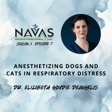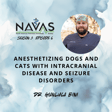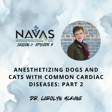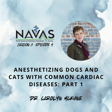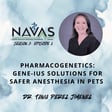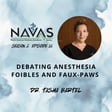
Dr. Stuart Clark-Price on Equine Anesthetic Recovery
In this episode, we are going to shine the spotlight on a species that doesn’t always get the limelight on this podcast: the horse! Horses pose a unique challenge for anesthetists, especially when we turn off the vaporizer at the end of anesthesia and ask these rather large animals to stand up while under the influence of medications designed to cause sedation and muscle relaxation. In equine anesthesia, the recovery period is a time of considerable risk and has been the focus of prolific research, with many studies attempting to pinpoint risk factors that increase the risk of adverse events occurring in the recovery period and identify pharmaceutical protocols and recovery techniques that will mitigate these risks.
Lucky for us, we have an exceptional guest joining the podcast to delve into this particularly challenging aspect of veterinary anesthesia. Dr. Stuart Clark-Price is a renowned expert in the field, boasting board certifications in both Large Animal Medicine and Anesthesia, and recently ascended to the role of full Professor of Anesthesia at Auburn University College of Veterinary Medicine. Together, with host Dr. Bonnie Gatson, we'll explore why recovery from general anesthesia poses such a significant challenge for the horse, shed light on the various risk factors that can increase the likelihood of undesirable recoveries, and share evidence-based recommendations for interventions that can enhance the quality of recovery for equine patients.
If you like what you hear, we have a couple of favors to ask of you:
- Become a member of NAVAS for access to more anesthesia and analgesia educational and RACE-approved CE content.
- Spread the word. Share our podcast on your socials or a discussion forum. That would really help us achieve our mission: Reduce mortality and morbidity in veterinary patients undergoing sedation, anesthesia, and analgesia through high-quality, peer-reviewed education.
As a reminder, the ACVAA Annual Meeting is happening in Denver, CO from September 25-27 later this year. Registration rates are discounted for NAVAS members. We hope to see you there!
Sign up at https://vetvacationce.com/product/acvaa-annual-meeting-denver-co-2024/
Thank you to our sponsor, Dechra - learn more about the pharmaceutical products Dechra has to offer veterinary professionals, such as Zenalpha.
If you have questions about this episode or want to suggest topics for future episodes, reach out to the producers at education@mynavas.org.
All opinions stated by the host and their guests are theirs alone and do not represent the thoughts or opinions of any corporation, university, or other business or governmental entity.
